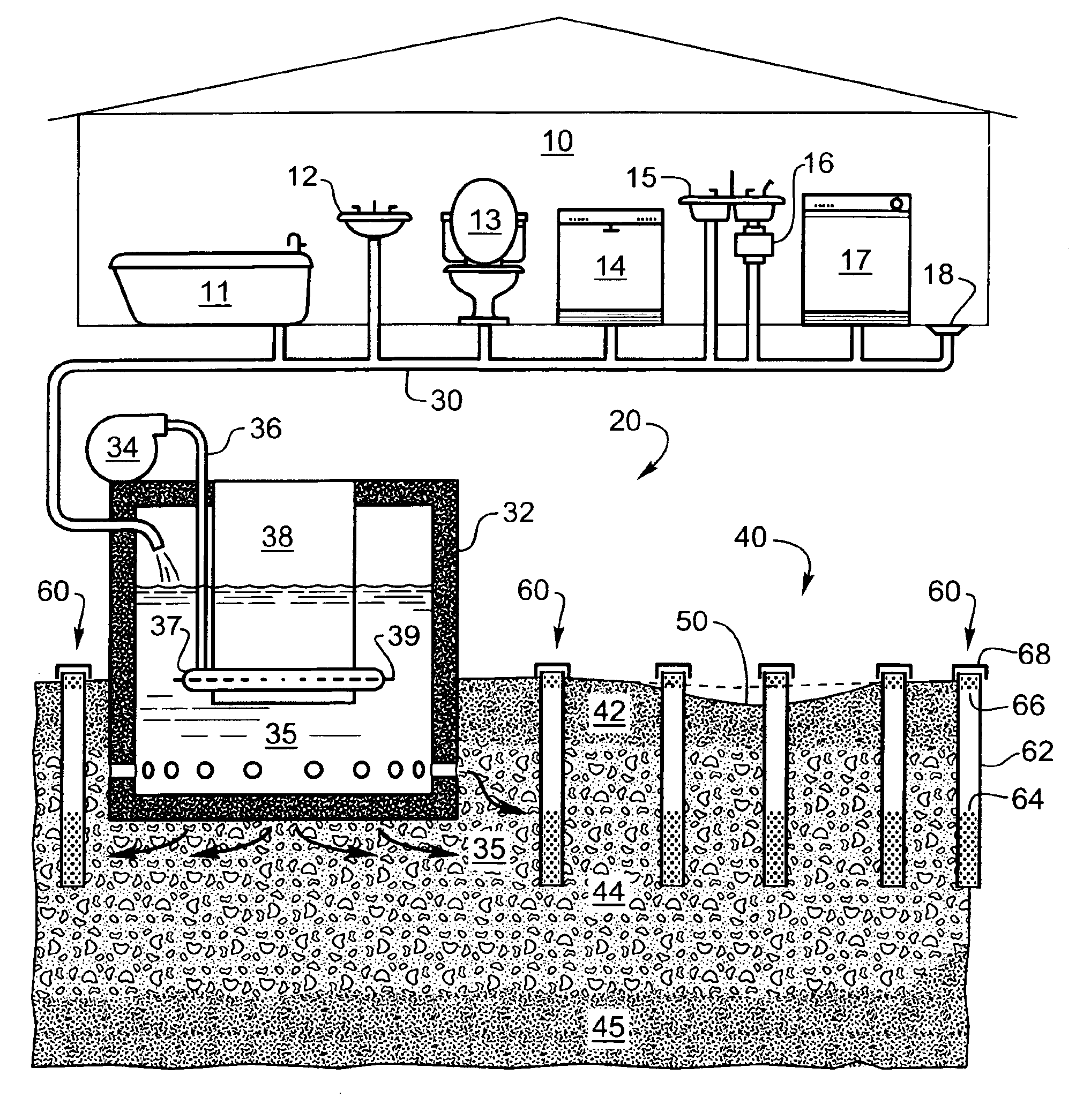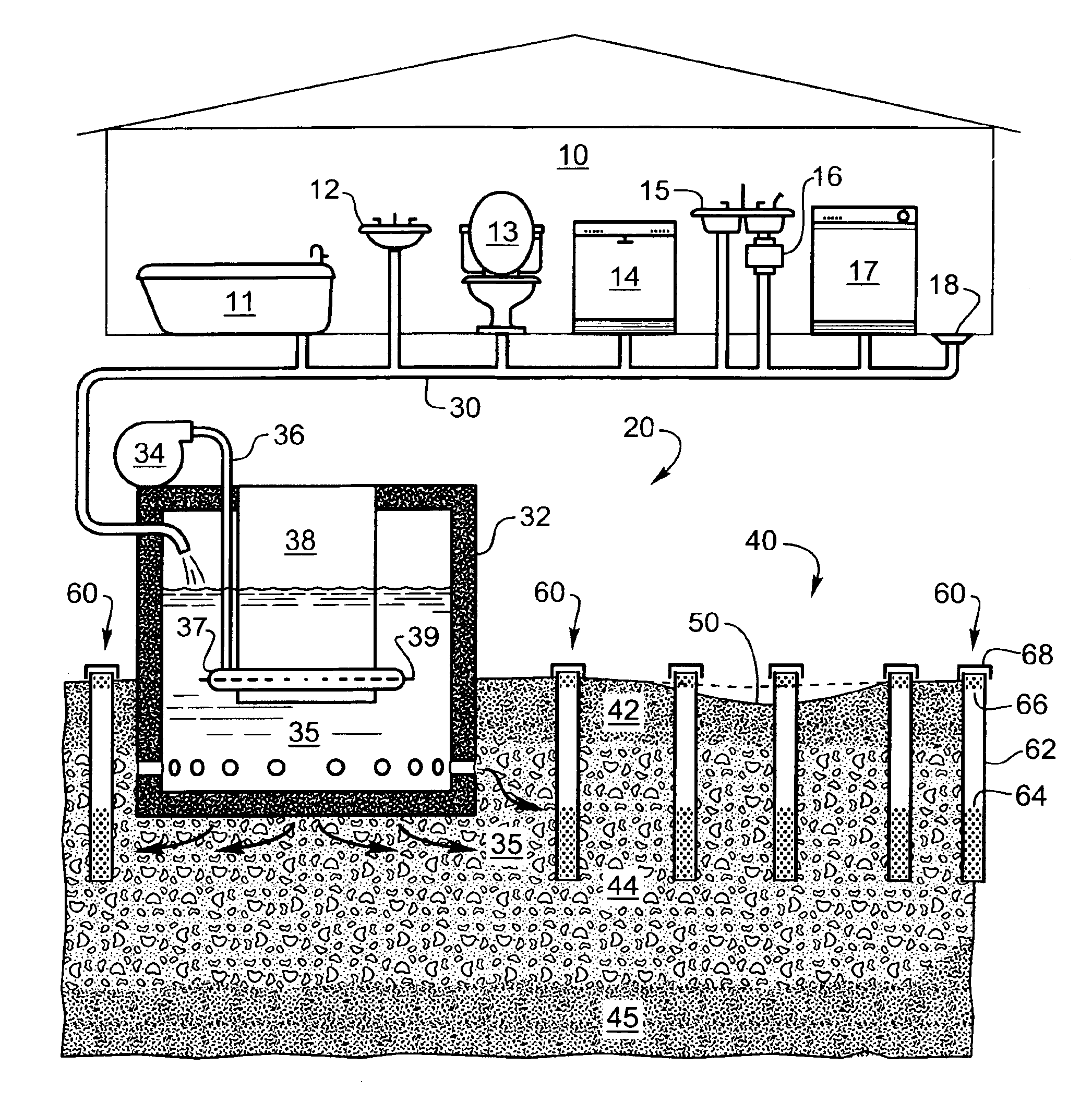Septic system treatment process
a technology for septic systems and treatment processes, applied in biological water/sewage treatment, sustainable biological treatment, grey water treatment, etc., can solve problems such as septic system failure, pollution of the area around septic tanks, drain fields, etc., and achieve the effect of reducing the cost of restoring a septic system to health
- Summary
- Abstract
- Description
- Claims
- Application Information
AI Technical Summary
Benefits of technology
Problems solved by technology
Method used
Image
Examples
Embodiment Construction
[0021]Referring to the FIGURE, in a typical household, a pipe 30 carries the wastes 35 mixed with water from the household 10 to the septic system 20. The septic system 20 comprises at least one septic tank 32 (or multiple septic tanks, aerobic tank, or cesspool), and a drain field 40 adjacent the septic tank 32. Household 10 is a source of waste material 35 from bath tubs 11, bathroom sinks 12, toilets 13, dish washing machines 14, kitchen sinks 15, disposals 16, clothes washing machines 17, and floor drains 18. These sources will deliver to septic system 20 organic wastes from humans in the form of solids, liquids, and toilet paper. The septic tank 32 will also receive grease, fats, oils, ground foodstuffs, soaps, medical wastes, and chemical wastes, which are to be treated by the septic system 20. In commercial settings, other wastes may be added to the system, such as chemical wastes or other biodegradable wastes.
[0022]The septic tank 32 is equipped with a blower 34 which forces...
PUM
| Property | Measurement | Unit |
|---|---|---|
| diameter | aaaaa | aaaaa |
| sizes | aaaaa | aaaaa |
| sizes | aaaaa | aaaaa |
Abstract
Description
Claims
Application Information
 Login to View More
Login to View More - R&D
- Intellectual Property
- Life Sciences
- Materials
- Tech Scout
- Unparalleled Data Quality
- Higher Quality Content
- 60% Fewer Hallucinations
Browse by: Latest US Patents, China's latest patents, Technical Efficacy Thesaurus, Application Domain, Technology Topic, Popular Technical Reports.
© 2025 PatSnap. All rights reserved.Legal|Privacy policy|Modern Slavery Act Transparency Statement|Sitemap|About US| Contact US: help@patsnap.com


